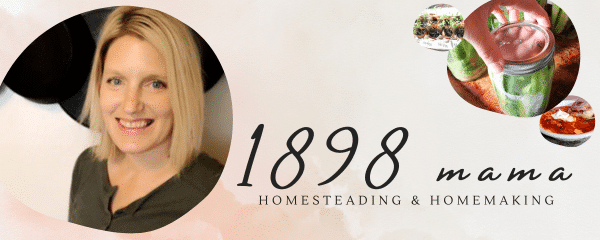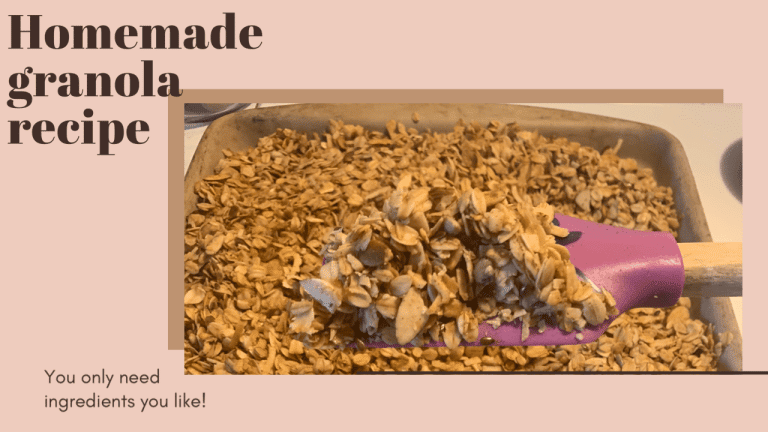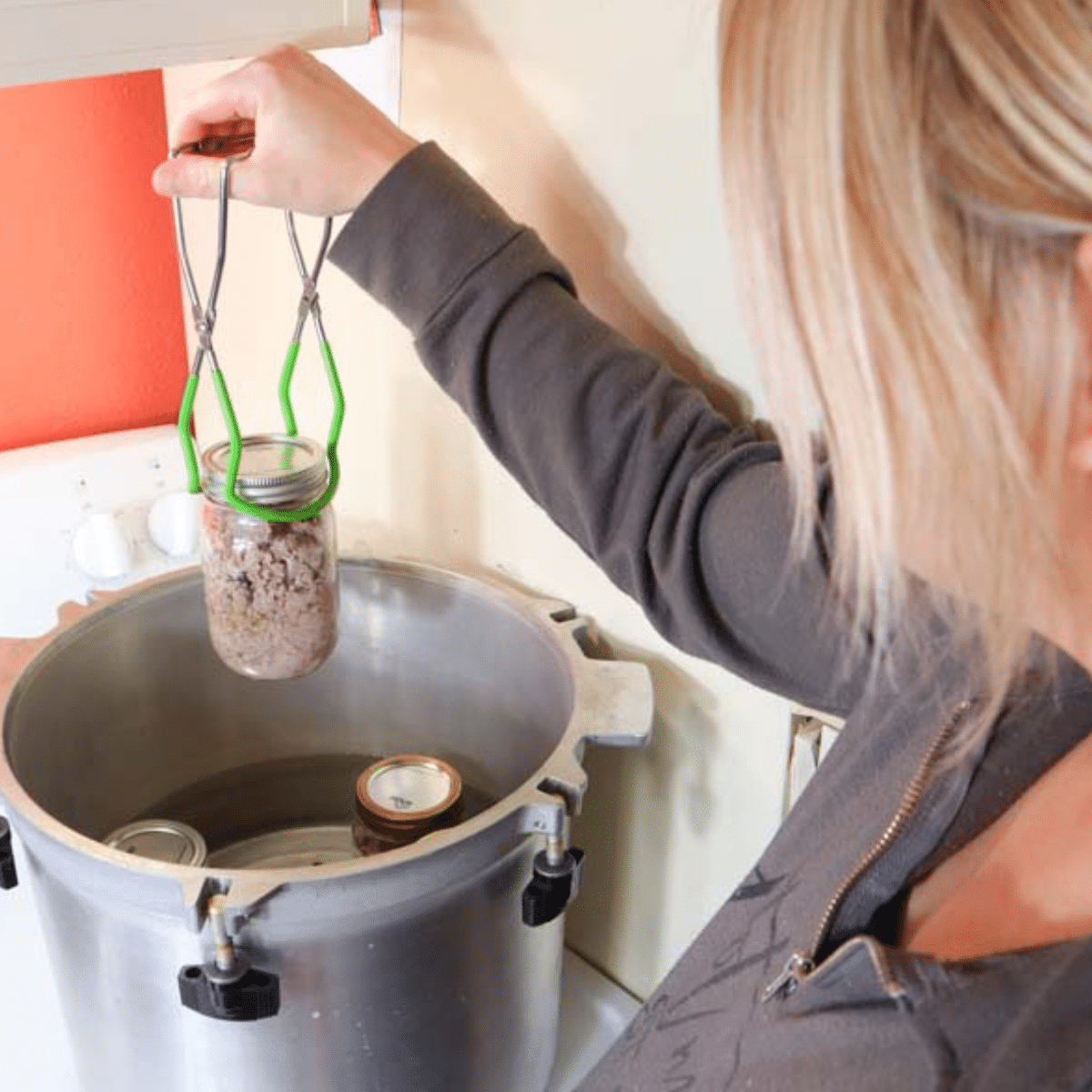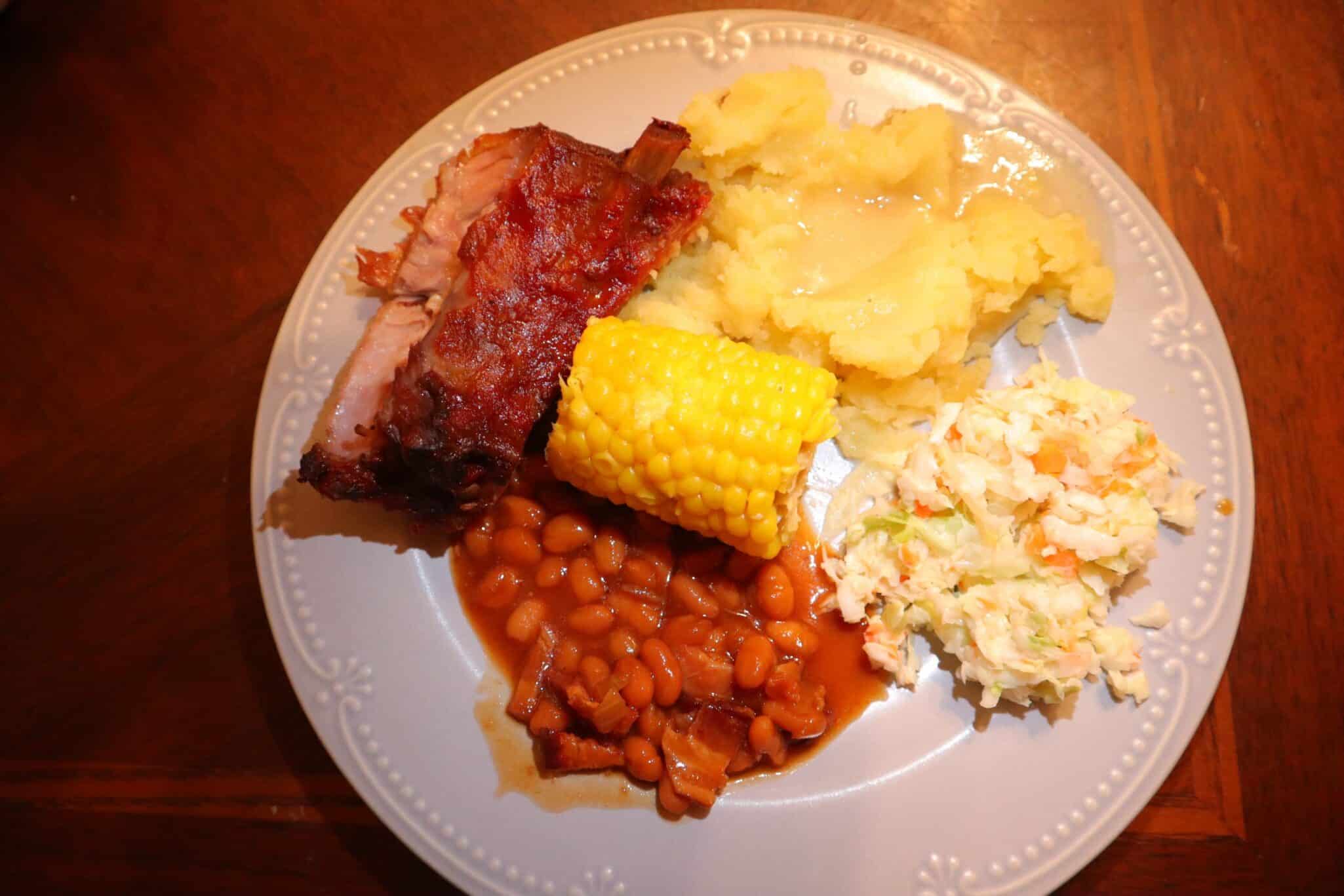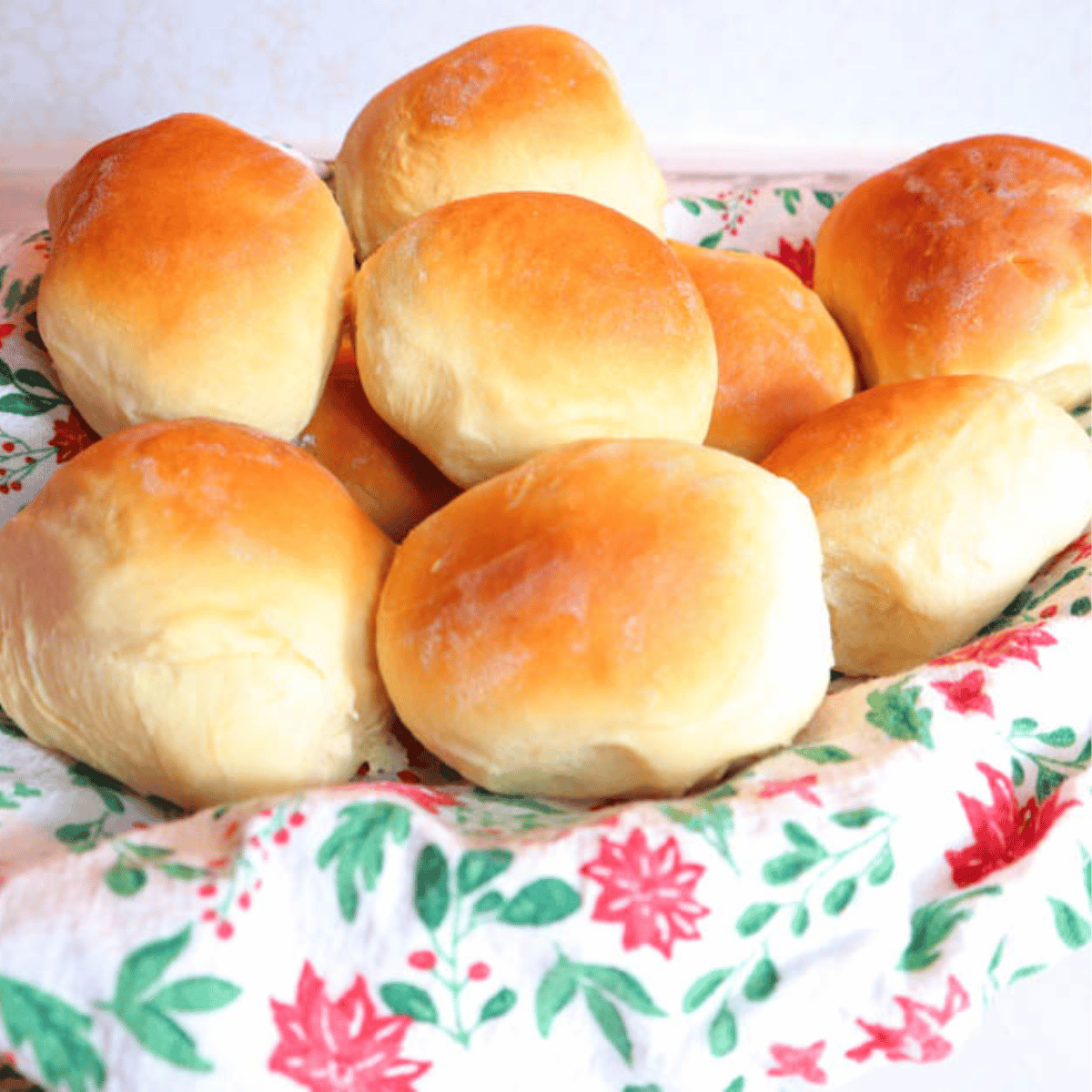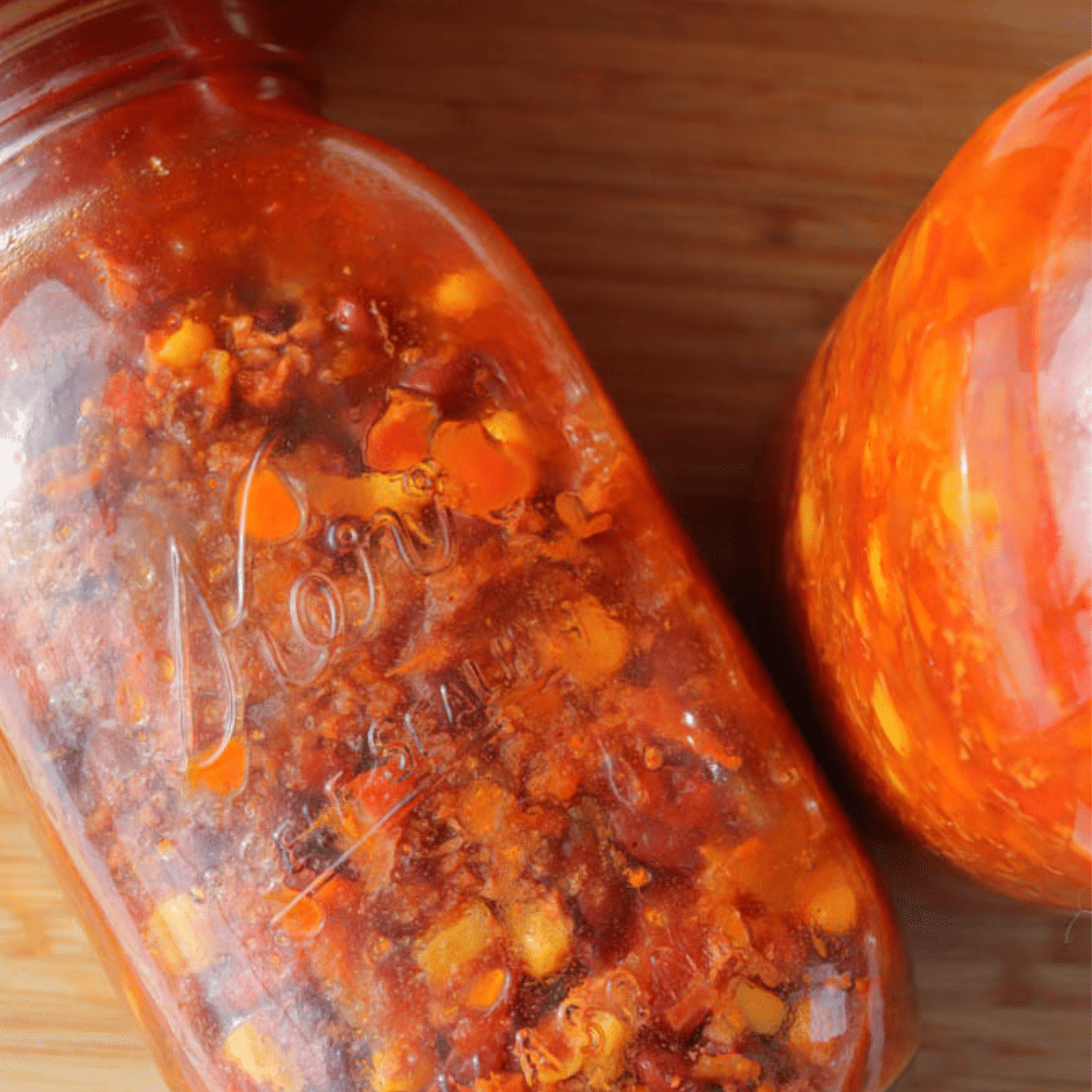How to Knead Dough – A Beginner’s Guide
How to knead dough so you can make perfect loaves of bread or rolls. Learn all the techniques you need right here for proper kneading to make your own bread.

What exactly is the purpose of kneading dough?
Kneading dough allows the proteins to develop the gluten in the dough. This allows it to bond together and hold, creating structure. Kneading allows the dough become soft and almost like a cushion. When kneading, it allows gases to be trapped into that cushiony structure, causing the dough to rise. That way, when you slice into your bread or take a bite of your bun, it doesn’t just fall apart into a bunch of crumbs. Therefore, all that pushing and pulling of kneading dough is necessary for homemade bread.
How to Knead Dough
To make a single loaf of homemade bread, kneading dough only takes 8 to 10 minutes. Kneading dough is actually pretty easy work once you understand how to do it and get used to it. Don’t worry if you need to take a break in that time either. Just set the dough down and take a break. In fact, sometimes giving the dough a few minutes to rest can improve the quality of your bread dough.
Step One
Sprinkle a clean countertop with flour. Take the dough out of the bowl and plop it down onto the lightly floured surface.
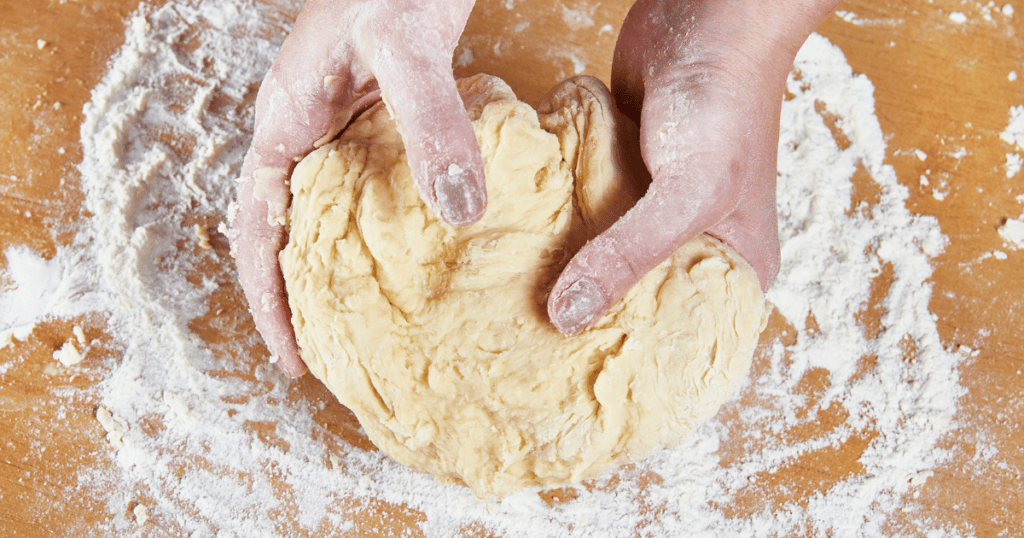
Step Two
Using the heel of your palm, push the dough down and outward.
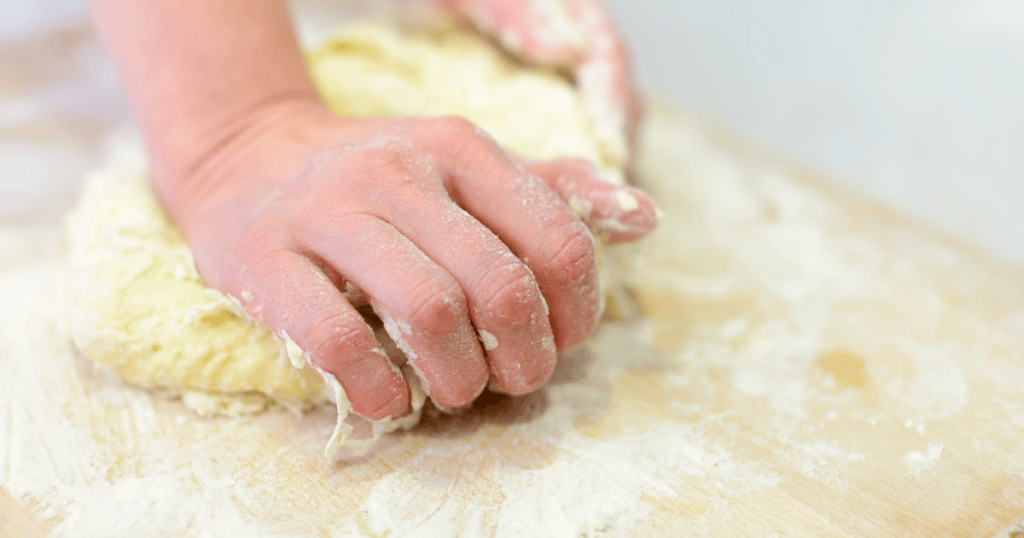
Step Three
Push the dough away from you and then pull it back. Pull back in by grabbing the dough by the furthest section from you and folding it in half back toward you. Repeat that, pushing away and pulling it back in. Push it away again, then pull it back. Over and over again.
After every few folds, turn the dough a quarter turn to ensure that all the dough is getting worked.
Repeat pushing and pulling until the dough is elastic and in a smooth ball, ready to be done kneading. If the dough is still shaggy, it is not developed enough. A rough dough is not what you want.
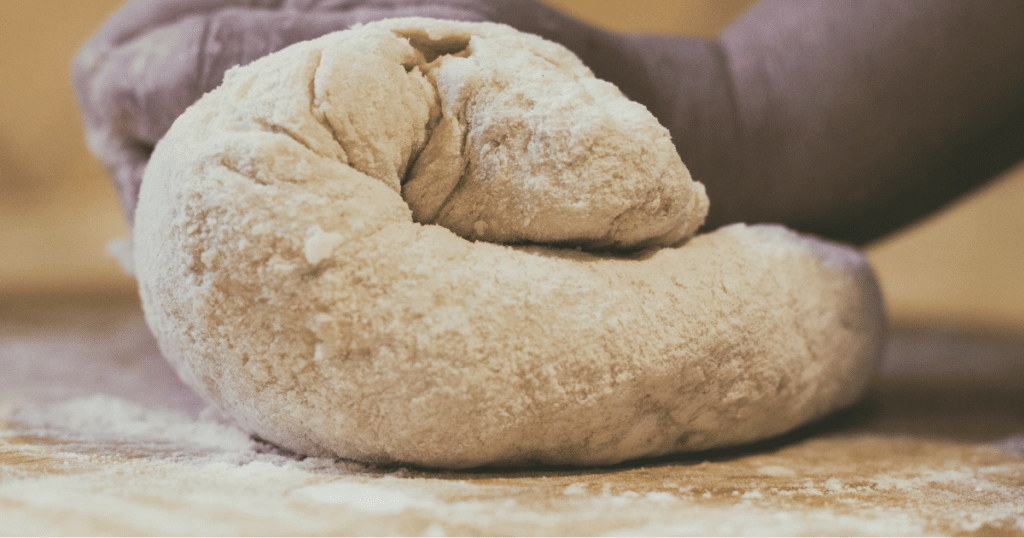
Step Four
Check to see if the dough is done kneading. To see if the dough is done being kneaded do the windowpane test. This will be the most accurate way to tell if the gluten strands are well developed.
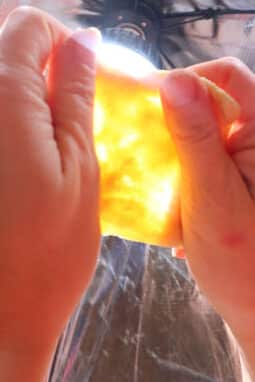
Alternatively do the touch test. Poke the dough with your finger. If the indent stays for awhile, continue kneading. If the indent fills back in rather quickly, the dough is properly kneaded. Kneaded dough should hold it’s shape.
Congratulations! The dough should be soft and ready for it’s first rise!
This post contains affiliate links, which means I make a small commission at no extra cost to you. See my full disclosure here.
Kneading With a Stand Mixer
I suggest learning how to knead dough by hand before using a stand mixer. Understanding dough and the feel of it will improve your bread game tremendously. However, using a stand mixer is quite handy.
If you have a stand mixer with a dough hook, keep the speed on low. Let the machine work for you but in a slower way like human hands would do. Be aware the over kneading is more likely with a stand mixer, so keep your eye on the dough and watch for visual cues. When it starts to pull away from the sides of the mixing bowl and form a circle, turn off the mixer and check your dough.

Tips On How to Knead Dough
- Wash your hands good before working with the dough. Remove all rings and other jewelry that might get caught in the dough. Roll your sleeves up and wear an apron.
- While kneading, if the dough starts to feel tight, as if it is resisting stretching, allow the dough to rest for 5 minutes. This will relax the gluten and improve the bread’s texture once it is baked.
- Different things can have an affect on kneading. Types and even different brands of flour will knead differently. For example, bread flour has more protein than all purpose flour. Therefore, it will develop the gluten more effectively, taking less time. Even different days can change the time it takes to knead. Your humidity level and elevation of where you are working cause an effect.
- It is helpful to keep a cup of flour nearby your work surface in case more flour is needed. Lightly dusting your hands with flour can help if the dough is sticking to your hands too much.
- It will be tough to get the perfect dough on your first time. Don’t worry, under-kneaded dough is still edible! Keep practicing, you will get it! All the hard work is worth it when you get that freshly baked loaf of bread out of the oven.
Answers to the Most Common Questions:
Can dough be kneaded too much?
Yes. Over-kneading the dough will result in it ripping easily and baking into a dense, flat loaf of bread. This is really hard to do by hand and is usually the work of a machine.
How can you tell if dough is over kneaded?
The dough will become too warm and change color, kind of into a dull white. This causes a dense bread.
If you have over kneaded the dough, let the dough rest for 15 minutes. Shape and let rise and then try again!
Can you knead dough in a food processor?
While it is possible, if you are baking something like sandwich bread, shy away from using a food processor. The metal blade can tear apart the strands of gluten required for the bread’s structure and rising capabilities. However, pizza dough would be a good candidate for this.
Can you add too much flour to the surface?
Yes. Adding too much flour can result in a crumbly bread. While kneading, if the dough continues too be too sticky but you have added enough flour, let the dough rest for 5 minutes. During this time, the water will absorb the flour and the dough should be easier to handle when you return.
How long do I knead dough?
Kneading time will vary depending on so many factors. What kind of flour did you use? What brand of that flour? How strong are you? How many loaves are you kneading at once? Is it rainy outside? What kneading techniques are you using?
A good amount of time is 8-10 minutes. Don’t be surprised if it takes 10-15 minutes though. Don’t get discouraged if it takes double that either.
How do you tell if dough is kneaded enough?
The windowpane test is the best way to tell if the dough is kneaded enough.
Recipes to Practice Kneading
Pin How to Knead Dough For Later

This post may contain affiliate links which I would receive a small commission at no additional cost to you. Please read disclaimer and privacy policy for full disclosure.
